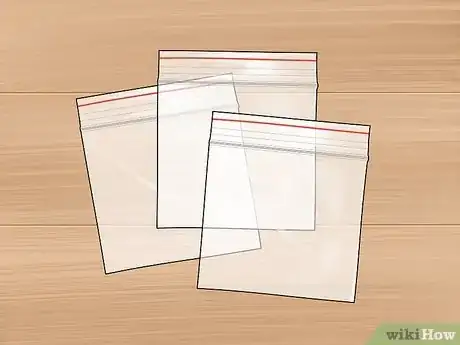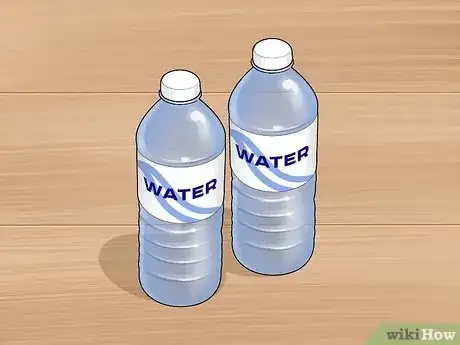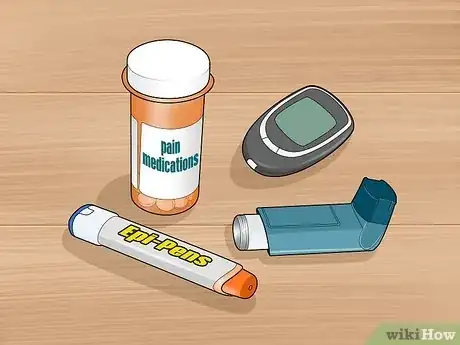wikiHow is a “wiki,” similar to Wikipedia, which means that many of our articles are co-written by multiple authors. To create this article, volunteer authors worked to edit and improve it over time.
This article has been viewed 1,501 times.
Learn more...
Emergency kits are useful in disaster preparedness. Disasters such as blizzards, earthquakes, hurricanes, tornadoes, and fires can strike any minute, so it's good to be prepared. Many schools have emergency supplies stockpiled, but they also require students to bring their own emergency kits in case of an emergency. [1] Keep in mind that these emergency kits are for real emergencies. They are not for general preparation for school. So, do not put anything unnecessary in there. This is not a period survival kit or a personal hygiene kit, so don't put those items in there. Those aren't genuine emergencies. This article will guide you on how to prepare a school emergency kit.
Steps
-
1Bring a large plastic bag. Use a large plastic bag to put everything you need inside. Ziploc bags are commonly used to store these supplies, but you could use any sealable bag. Bags that open could easily tear or fall apart, so use sealable bags.
- Bags with zippers or Ziploc bags are the best options.
-
2Add something for identification. If you or your child gets stranded in a storm, it will be difficult to locate and return children to their families. If your child has their emergency kit, they will be able to show the emergency responders their name and who their family members are. You'll need some sort of identification- a name tag and a picture of the child's family is enough. [2]
- Put a name tag/ID card and a picture of the child with their family inside of the emergency kit.
Advertisement -
3Put a water bottle in. Water is scarce, and only 0.3% of the water on Earth is fresh. [3] 99% of the Earth's water is unsanitary, saltwater, or in ice. Some areas have droughts or unsanitary water, so it is important to bring water. Buy bottled water and store the water in the kit. Now's not the time to be environmentally-friendly- metal water bottles are too heavy to carry in the kit. They could also tip over, damaging the items in the kit.
- Buy small plastic water bottles instead. There are mini bottled water kits that you can buy in stores.
-
4Pack non-perishable foods. Non-perishable foods, or foods that stay fresh for a long time, are crucial to the survival kit. Bring foods that don't need to be cooked nor eaten in a short period of time. It's best not to put large foods (like canned food) in there, since it's supposed to be a temporary survival kit. Besides, it will take up too much space in your kit.
- Granola bars and crackers are good options.
- There are nut-free granola bars (which contain fruits like figs and raisins), so if your school doesn't allow foods like nuts or seafood, bring nut-free granola bars or foods instead.
-
5Put medicine and medications in the kit. Some students (like those with severe allergies, asthma, diabetes, cystic fibrosis, ADHD, painful headaches or cramps, etc.) will need medication to survive. Without it, they could be uncomfortable, require a trip to the hospital, or even die. Since medicine is needed for some students to survive, put the necessary medications in there.
- Bring inhalers, Epi-Pens, pain medication, ADHD medication, diabetes blood glucose meters and pumps, and other important medication and put them in the kit.
-
6Pack a flashlight. Blackouts are common in schools, so it's important to bring a flashlight. If there's a power outage, all of the lights in the school won't work, so the whole school (or even nearby neighborhoods) would be in the dark. Being in the dark without light is dangerous, as you could easily trip or bump into things. Criminals would also hide in the dark, which makes it even more hazardous.
- Buy a mini flashlight. You can buy these in most stores. Large ones wouldn't fit in your kit, and they would waste too much precious space in your emergency kit.
- You should also pack extra batteries in case the flashlight runs out of battery.
-
7Put emergency first-aid supplies in the kit. Many people get injured during emergency scenarios. This is why first-aid supplies are necessary in the kit. You don't need to bring a defibrillator (used to shock hearts back to a normal heartbeat) or become a surgeon. You just need basic first aid supplies and knowledge.
- Pack wet wipes (to sterilize wounds), band-aids, cold compresses, gauze, bandages, tweezers (to treat splinters), medical scissors, and a thermometer in addition to the other supplies.















































